New instruments and possibilities to change the world through art: UNIDEE’s most recent module, held from 3rd to 7th December, aimed at reactivating and mediating the archive of Arte Útil – freely accessible at www.arte-util.org – within and without the museum context. The project, curated by Asociacion de Arte Útil, gathers almost 300 international case studies in which art has been able to trigger and promote a responsible social transformation. The organization, presented and activated by its members through workshops, exhibitions and seminars all over the world, wants to become a source of inspiration not only for subjects specialized in contemporary art, but also for a general public of non-experts. The title chosen for the module carried out in the spaces of Fondazione Pistoletto, ‘Broadcasting the archive #10’, is therefore self-explanatory: the workshop, specifically designed for UNIDEE (as mentioned in the outline of the module), investigated a few case studies in reference to the criteria of Arte Útil and experimented with various methodologies linked to the idea of ‘learning by doing’, through exercising in the physical space. Arte Útil* (‘useful art’) considers in fact art as an instrument or a device to use when searching for sustainable solutions for social change.
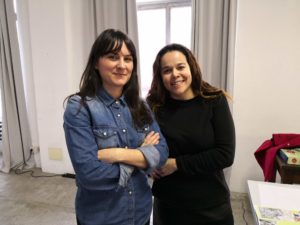
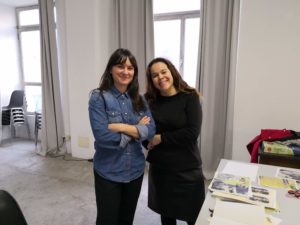
In the picture: The two mentors, Alessandra Saviotti, on the left, and Gemma Medina Estupiñan
‘Broadcasting the archive #10’ was curated by Gemma Medina Estupiñan and Alessandra Saviotti, and saw the participation of six young residents, aged from 22 to 27: two Italian, one Russian, one Egyptian (living in Toronto), one Portuguese and one Mexican (these last two living in France), they were Maria Giovanna Sodero and Eleonora Mattozzi (both through a partnership with Rome’s Academy of Fine Arts), Lidia Zhudro, Farah Michel, Maria Norte Fonseca and Esthela Meza (both through a partnership with École supérieure d’art et design – ESAD, Grenoble). The two mentors talked to us about the peculiarities of the module: “We centred the week on the idea of using art as an instrument for social change, – said Alessandra Saviotti – we referred to Arte Útil to define art as a device, not meant as something useful and usable, but as something able to trigger a change. In order to activate this process, it is necessary to learn through practice, not only theory: our role as mentors was therefore not only propositional, but effective in the terms of a specific pedagogic process; a methodology conveyed through horizontal teaching.”
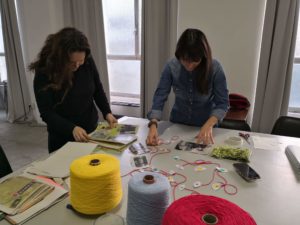
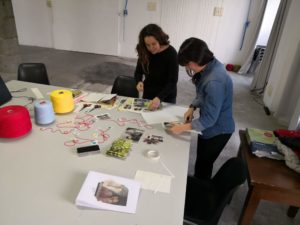
Gemma Medina Estupiñan carried on telling us about the creation of the archive: “Alessandra and I started elaborating a collection of case studies from the 19th century onwards featuring ‘useful’ art. This online archive was born on the occasion of the exhibition ‘The Museum of Useful Art’, from an idea of Tania Bruguera and held at the Van Abbemuseum in Eindhoven in 2013-2014. After the exhibition, we realized that the archive could become an inspiration for an external public not directly involved in art or museums. We therefore thought about it and wondered: can we leave the museum and use the archive to teach Arte Útil’s practice?”
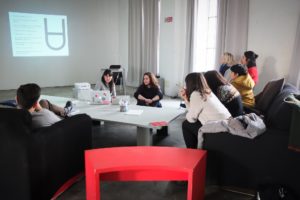
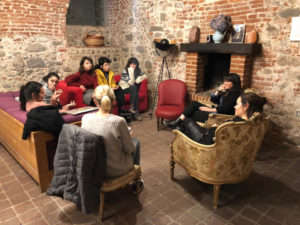
The answer was “yes”: the archive has been active and developing since 2015. The selection of the projects to include in the archive is made through a continuous open call, open to anybody, who can submit them through the association’s website. The projects are shortlisted according to Arte Útil’s criteria, while the final decision to integrate them is by always different groups. “Being Asociacion de Arte Útil an informal organization without a definite status – explain the curators – the selection of projects is carried out collectively by our network. During our days in Biella, for example, we looked into the projects already developed by Cittadellarte on the theme of food, like Let Eat Bi, Let Eat Grow and Terre AbbanDonate. We then discussed with the module’s students how these initiatives can become part of the archive”. The formative experience on the theme of food was enhanced by the participation as speakers of Armona Pistoletto (president of Let Eat Bi) and the artist Kathrin Böhm (co-head of the project Company Drinks), who illustrated the peculiarities of their organizations.
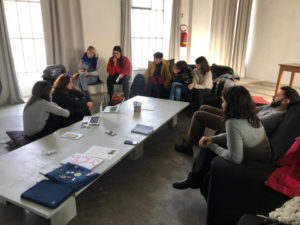
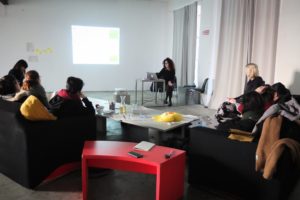
Alessandra Saviotti continued highlighting the way Fondazione Pistoletto artistically contaminated the residents: “Dealing with an institution already operating on these practices is easier, since we have a common ground. Besides, we had already collaborated with Cittadellarte from remote: when we initially applied for funds for the archive, Visible was one of our partners. I am myself now part of that project as international curatorial advisor for the 2019 Visible Award, so, for me, it feels like home. Gemma had also already been in close contact with Fondazione Pistoletto, since she had participated in one of the modules curated by Aria Spinelli. This experience – concludes Alessandra – revealed itself rich of stimuli. We noticed that the participants were extremely interested, most likely because we applied a more horizontal pedagogical practice, which had a positive bearing.*”
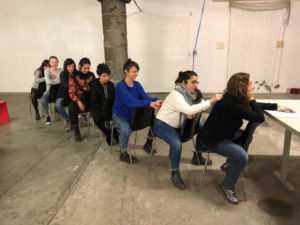
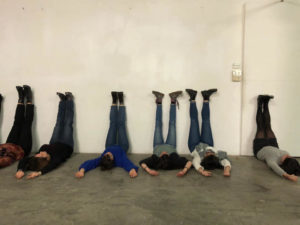
*1 – The notion of what constitutes Art Útil was developed through a series of criteria formulated by Tania Bruguera in collaboration with curators and researchers from the Van Abbemuseum (Eindhoven, The Netherlands), the Queens Museum (New York) and Grizedale Arts (Coniston, United Kingdom).
*2 – On the fourth day of the module, the mentors suggested the residents should make the programme for the day.

